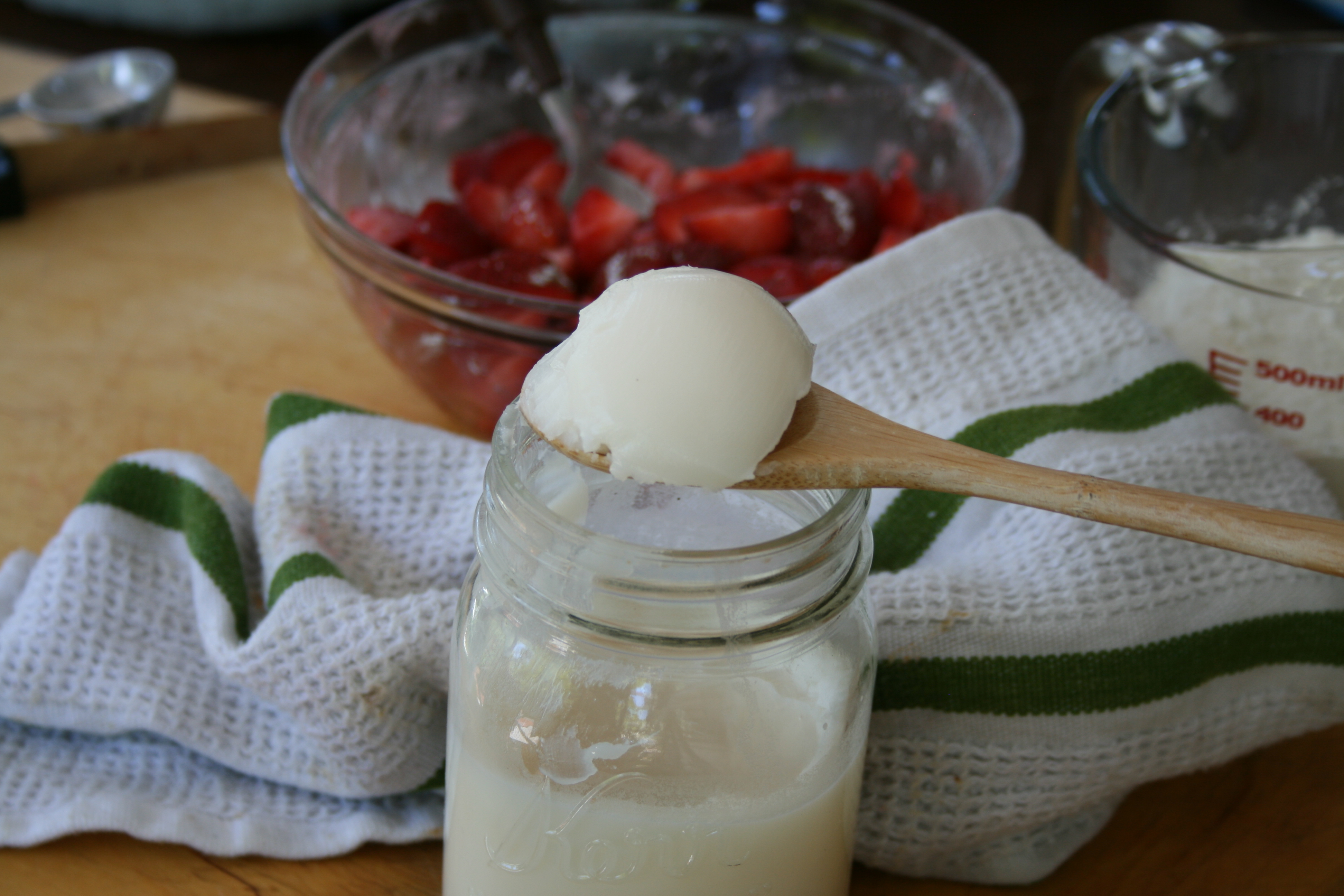
Good Lard
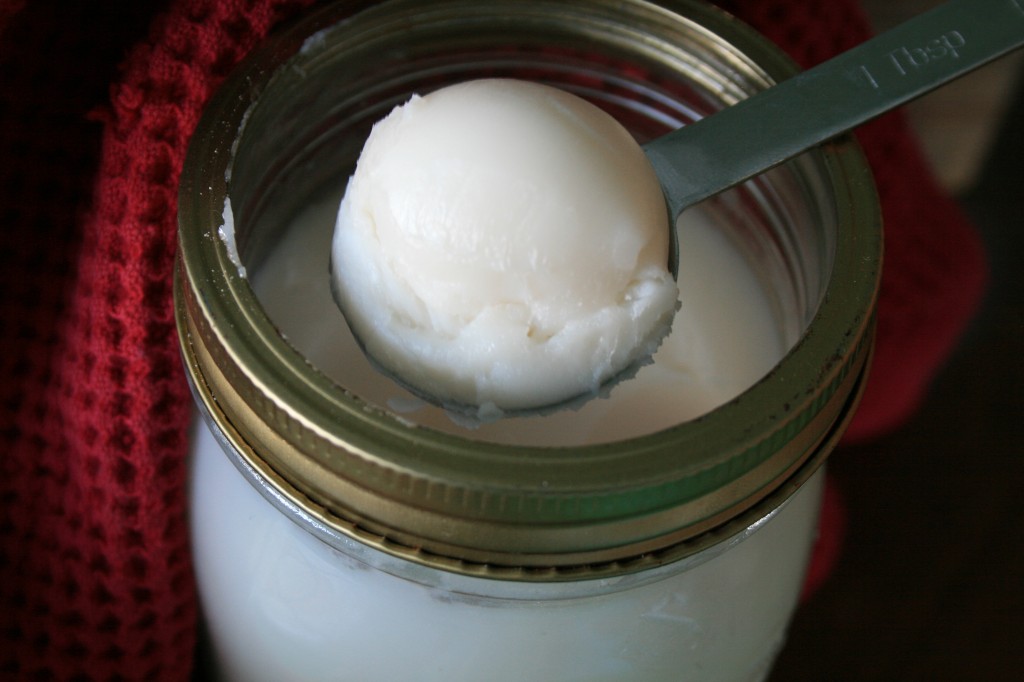 I love lard. There, I said it and I’m not ashamed who knows it. There exists today a small number of us who are on a mission to fight back against lard’s undeserved reputation as the cigarettes of cooking fats, and to help restore people’s faith in lard for the natural and, dare-I-say, healthy wonder that it is. We worship the lard, and it’s time that you accept the lard back into your hearts, and, more importantly, into your kitchens.
I love lard. There, I said it and I’m not ashamed who knows it. There exists today a small number of us who are on a mission to fight back against lard’s undeserved reputation as the cigarettes of cooking fats, and to help restore people’s faith in lard for the natural and, dare-I-say, healthy wonder that it is. We worship the lard, and it’s time that you accept the lard back into your hearts, and, more importantly, into your kitchens.
Although the crusade for the redemption of lard has been occurring for several years now, with some celebrity chefs and trendy-foodie restaurants turning back to lard for their main source of cooking fat, lard has still yet to make the comeback it deserves, and I’m going to do my part to help get it back on the menu. Before I begin my tutorial on how to render your own unprocessed lard, I believe some important fat-facts and a history lesson are in order. Hopefully, you’re still reading this and just seeing the word ‘lard’ didn’t make you immediately run from the computer screen and start doing crunches and lunges across your living room. If that’s you, take a deep breath and sit your lard-ass down. If the word ‘lard’ still makes you squeamish, you might be pleasantly surprised to learn that lard isn’t nearly the death sentence it’s been regarded as for the last couple of decades.
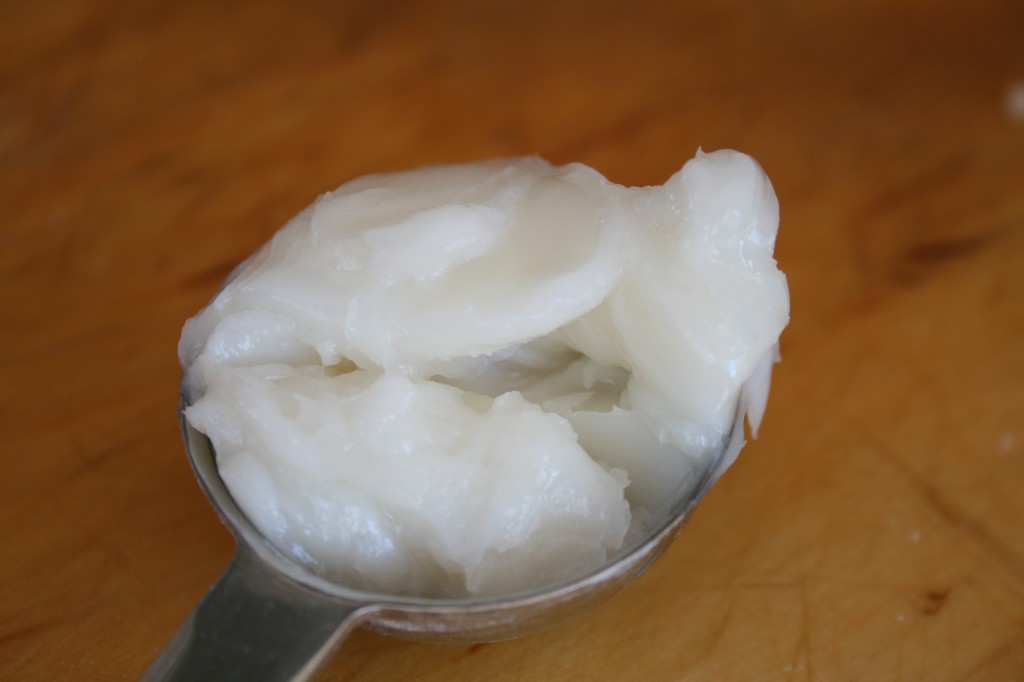
So, first off- What is lard exactly? Well, quite simply, it’s pig fat. Typically when we think of lard, we are thinking of the rendered form of pig fat, but lard can refer to pig fat in it’s rendered and unrendered form. Rendering is the term applied to the process of taking animal tissues and converting them into a stable material, in this case- fat. Rendered lard will be the subject at hand today, which is the white creamy stuff in the picture above. What most people are surprised to learn about lard is that it is comprised of 45% monounsaturated fat. That’s the good kind that doctors are always telling you to eat more of. Lard has more monounsaturated fat, and less saturated fat than butter, and zero trans fat (the really bad stuff). I’m neither a scientists nor a doctor, so I can’t actually tell you what you should be eating…but you should be eating more lard, or at the very least, cooking with lard. If your curiosoty has been peaked, a quick google search on ‘lard’ will bring up many sites that are actually written by people in the medical or scietntific field and field that can tell you what you want to know about this pig fat. It seems as if the tides are changing and research is starting to show that animal fats can be, and should be, part of a healthy diet. This site does a good job of backing up this claim with some science. My own research into the subject has led me to draw the conclusion that fats like olive oil are best consumed unheated, like in salad dressings or drizzled over dishes, and it is better to cook with fats that are more stable, which includes all animal fats. Oh, and vegetable oils and hydrogenated fats (like shortening and Crisco) – just say no.
Most lard that is available in grocery stores has been partially hydrogenated to extend its shelf life, and hydrogenation produces trans-fats. This is why you’ll want to go through the trouble of rendering your own lard, or at least buying it from a reputable source. In the culinary world, lard is most revered by bakers for the way it gives pie crusts and biscuits an old-fashioned, flaky texture. Think of the phrase, “Like the kind your grandma used to make,” because she most likely used lard when she baked. Before the days of Crisco, lard was the staple fat that was found in most people’s kitchens. Pig’s were actually bred specifically for their fat. When I’m at work, it isn’t uncommon for me to overhear complaints from the older folk that our pork is so lean. The leanness in pigs today is due to lard falling out of favor to processed vegetable oils, and the demonizing of animal fats. In the beginning of the 19th century, lard was as common a household staple as butter. If you are interested in how the of the demise of lard came about, I suggest giving this NPR podcast a listen to; it’s a gripping tale of betrayal, literature, mad scientists, and Crisco. And it’s only 5 minutes long, so you should give it a listen. It really is pretty interesting. Go on, I’ll wait.
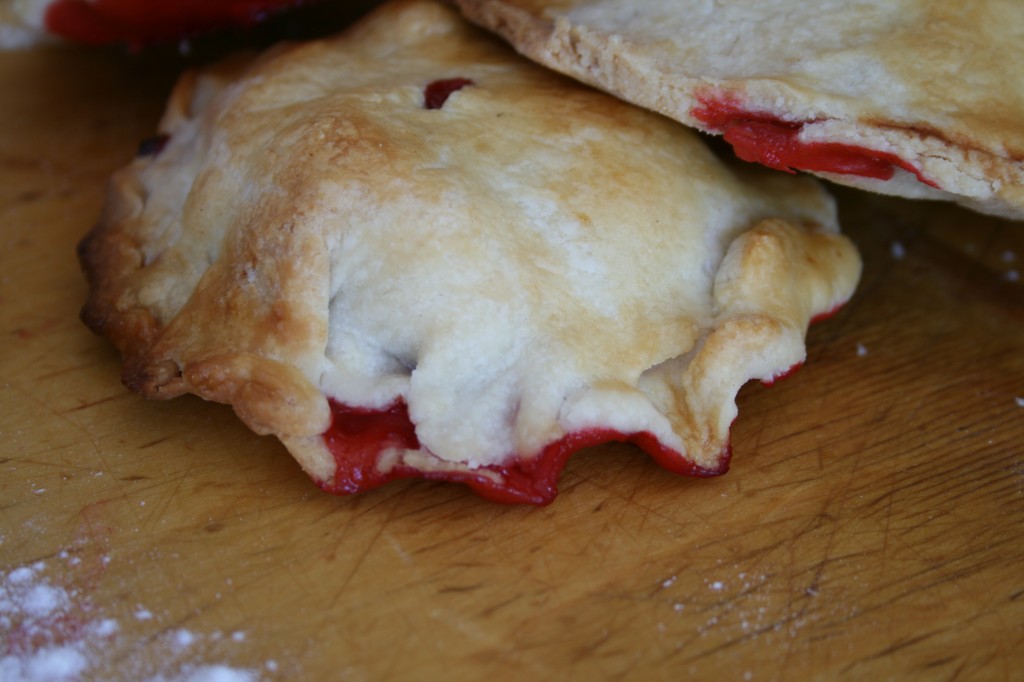
Did you listen to it? I’m going to assume you did, and we’ll move on now the exciting stuff: Rendering your own Lard.
What you’ll need:
– Pig Fat. What you are looking for is either fatback or leaf lard. Leaf Lard is ideal if you plan to use your lard for baking purposes, as it has the least amount of pork flavor. Leaf lard is the fat that surrounds the kidneys of the pig, and there is usually only 2-4 pounds of leaf lard per animal. Leaf lard can be somewhat difficult to come by, but it is available online if you want to get your hands on some and don’t have access to it otherwise. The next best type of fat to use is fatback. This is the fat that is found on, you guessed it, the back of the pig. Lard rendered from fatback is ideal for coking savory foods, such as sauteing or deep frying. You can also use this type of lard for baking, but preferably if you are making savory dishes, like pot pie or biscuits and gravy. There can be a more detectable trace of pork flavor from fatback, but it still maintains a relatively neutral flavor. You can purchase fatback online as well, or you can ask your butcher if they are willing to part with any of their pork trimmings. One pound of fat will yield about a pint of lard.
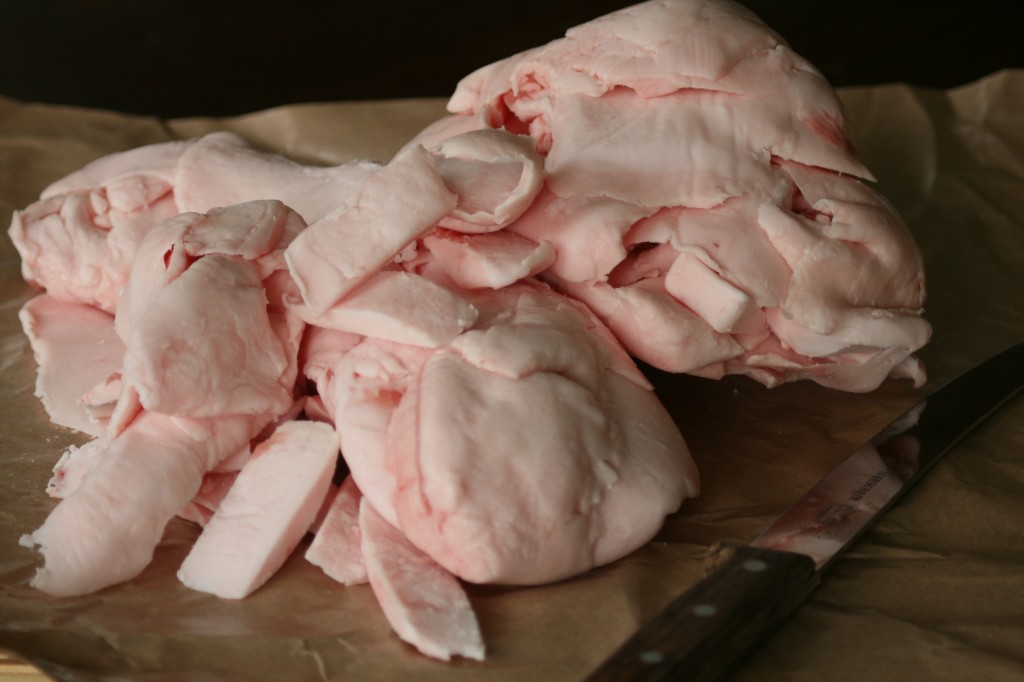
– A crock pot or large pot
– Water
– A sieve or cheesecloth
– Mason jars or other containers
Rendering Lard – Directions:
1) Chop the fat into small 1/2″-1″ pieces. You’ll want to pop the fat into the freezer for 45 minutes or so; working with room temperature fat will get really messy when chopping it by hand. You can also run the fat through a grinder (or ask your butcher to do it) or pulse it in the food processor a few times. Smaller bits of fat will render faster than large chunks.
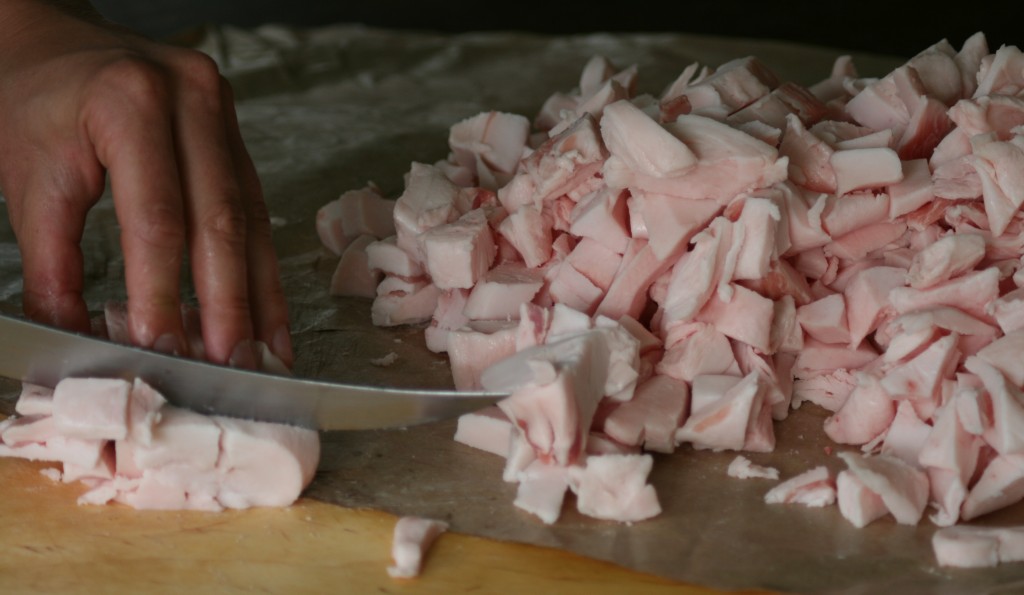
2) Put the fat into a large crockpot or large pot, and add about 1/4 – 3/4 cup of water, depending on how much fat you are rendering (for my five pound batch I used close to 3/4 of a cup of water). Set the heat to low. If you are using a crockpot you can set and forget it, but you’ll want to remove the lid after a couple hours to let nay water evaporate out. If you are using a regular pot, you may have to babysit it to make sure nothing starts to burn. You can always add more water if you need to. It should take 2-6 hours for the fat to render, depending on how much fat you are using.
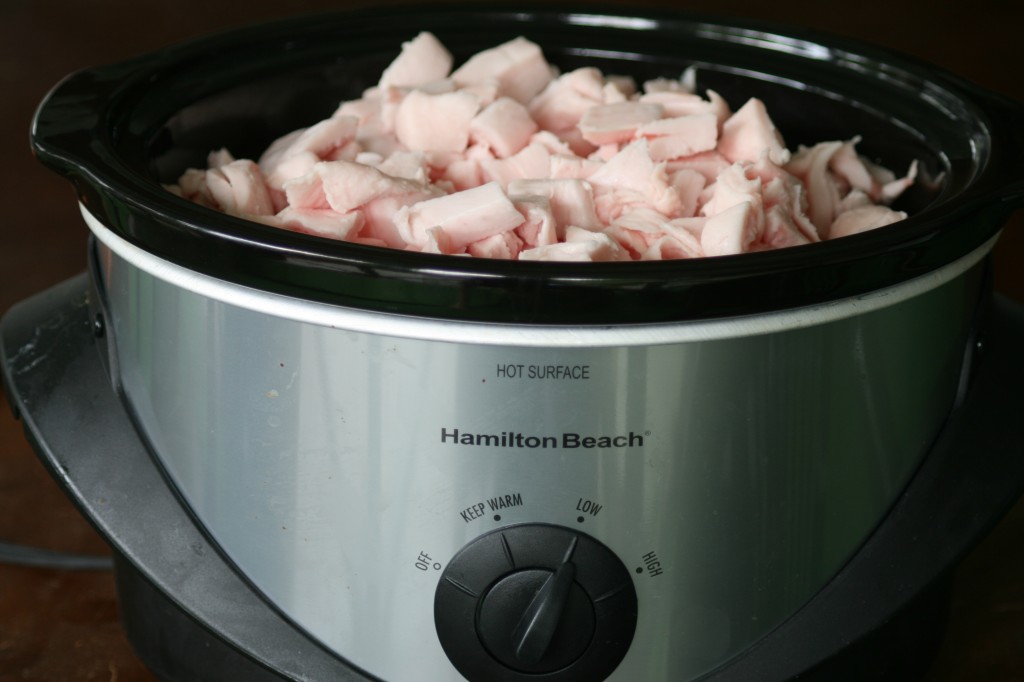
3) After several hours, most of the fat will have rendered, and you will be left with some leftover ‘bits’. These bits are the tissues that hold the pig’s fat together and can be turned into ‘cracklings’. Cracklings are a gift from the gods- we’ll get to those shortly. Carefully separate the solids (the soon to be cracklings) from the liquefied fat, which should be a yellowish color. Pour the fat through a sieve or cheesecloth into your mason jars. Save the solids!
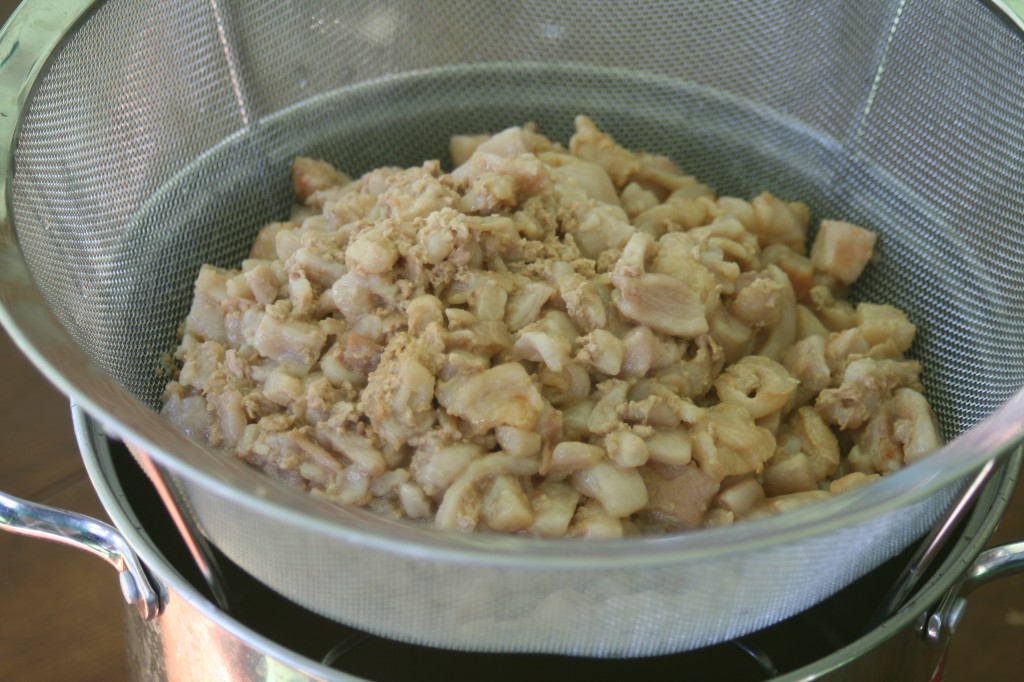
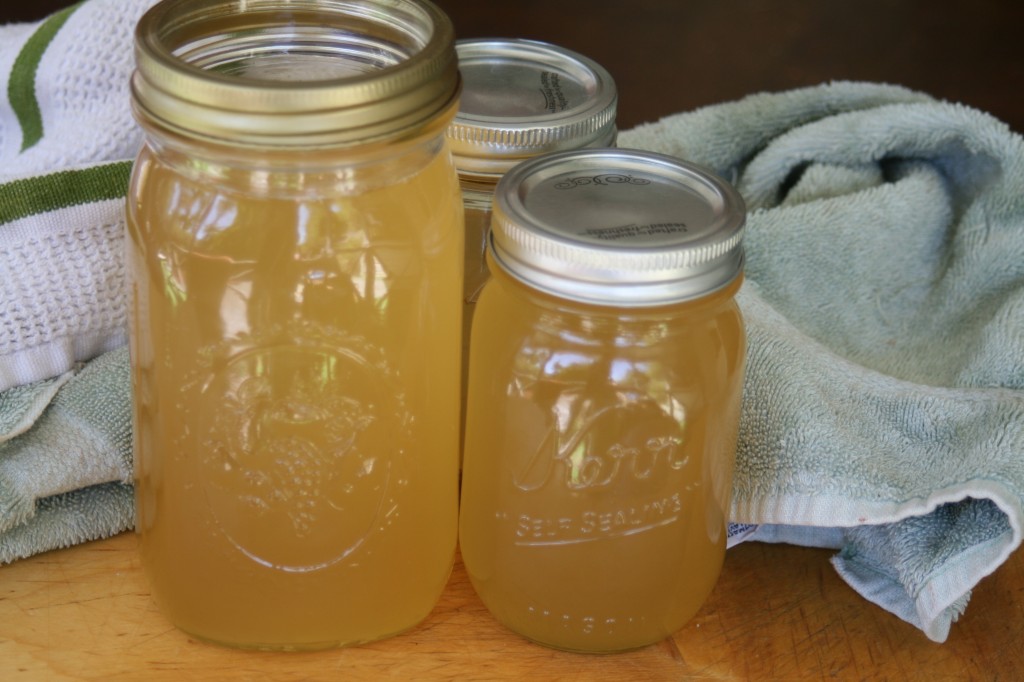
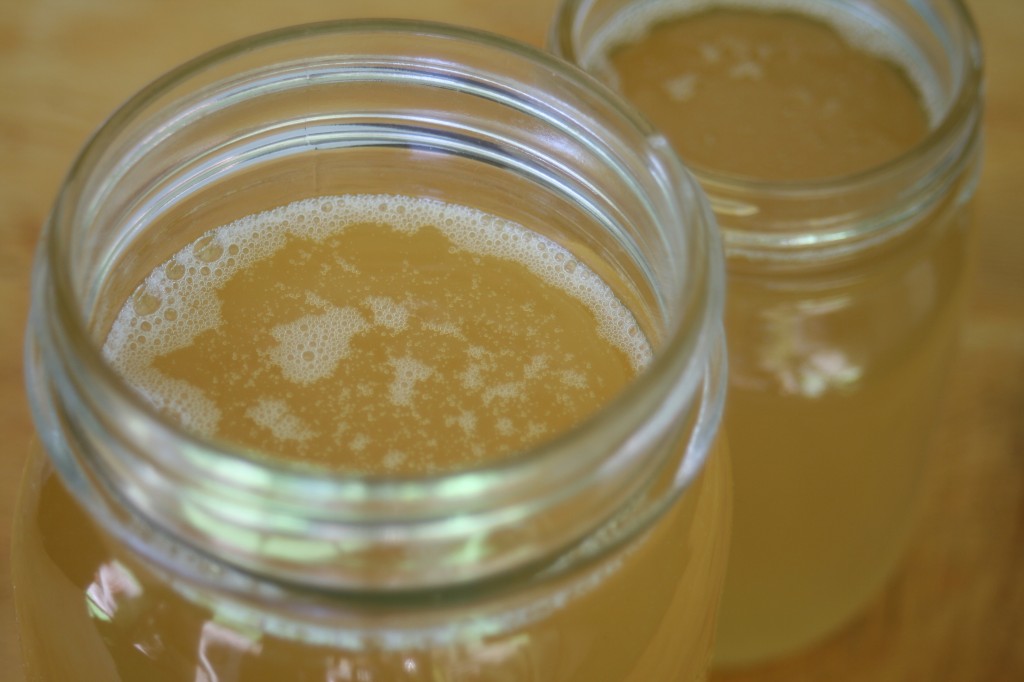
4) Refrigerate the lard overnight. When it solidifies it will be a creamy white color.
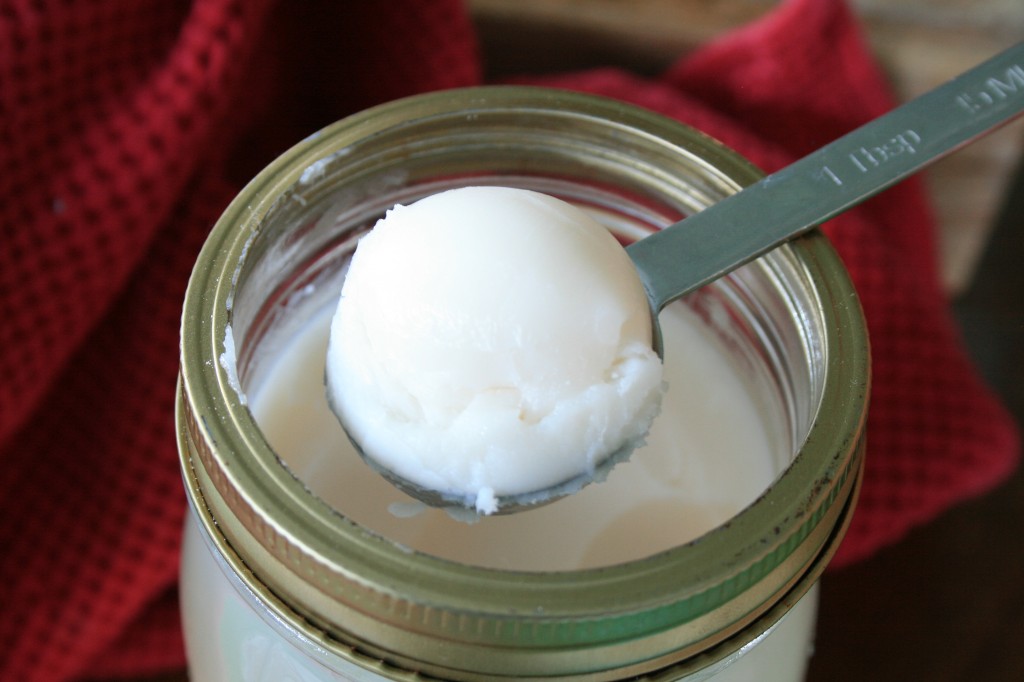
5) Back to those gross-looking bits. If the bits are already crispy from the rendering process, you’ve got cracklings! If they are still soft or not crispy enough, spread them on a cookie sheet and bake them at 375° for about 20-30 minutes. Cracklings are amazing just sprinkled with sea salt – they are weak-in-the-knees delicious. If you suspect that you are getting dangerously skinny, snack on these throughout the day to counteract that. They are also good sprinkled on salads. Anything you might use bacon bits in, you can use cracklings.
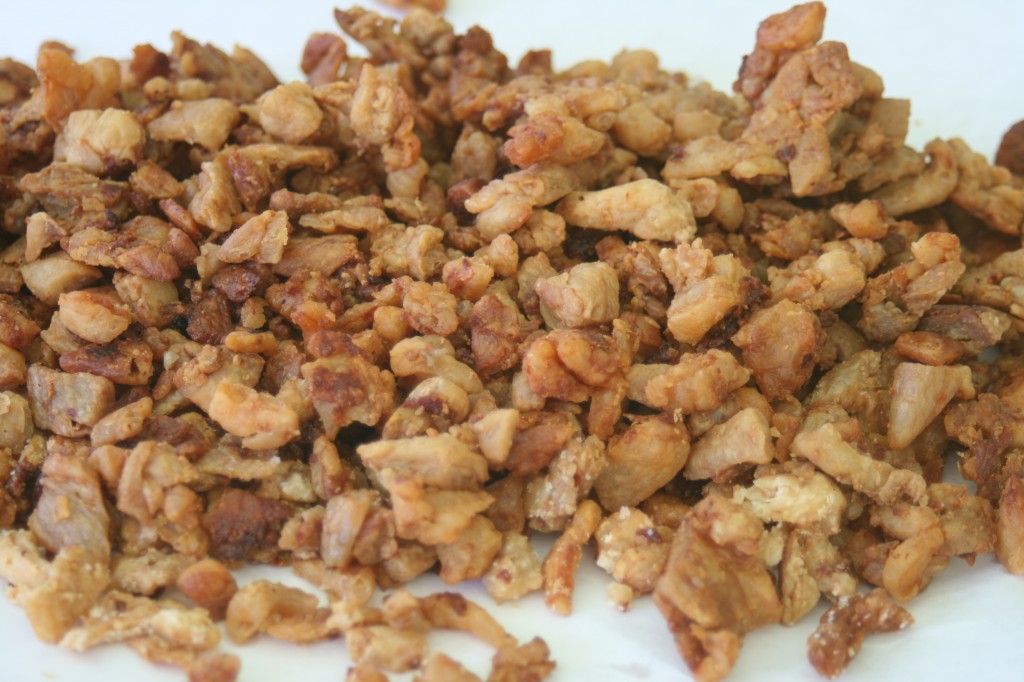
Keep your lard refrigerated or in the freezer, or in the winter months, when it’s not sweltering hot, you can keep it a room temperature. Use your lard for sauteing or baking your veggies, making home fries, pie crusts and biscuits, and pretty much anything you might normally use butter for.
So there you have it folks, it want to do what the cool kids are doing, you’ll start eating lard. It’s back on the menu!
2 thoughts on “Good Lard”
Love it.
Great article, Sarah. I’m old enough to remember my uncles’ tales of lard sandwiches–and they all reached 90+.
Comments are closed.